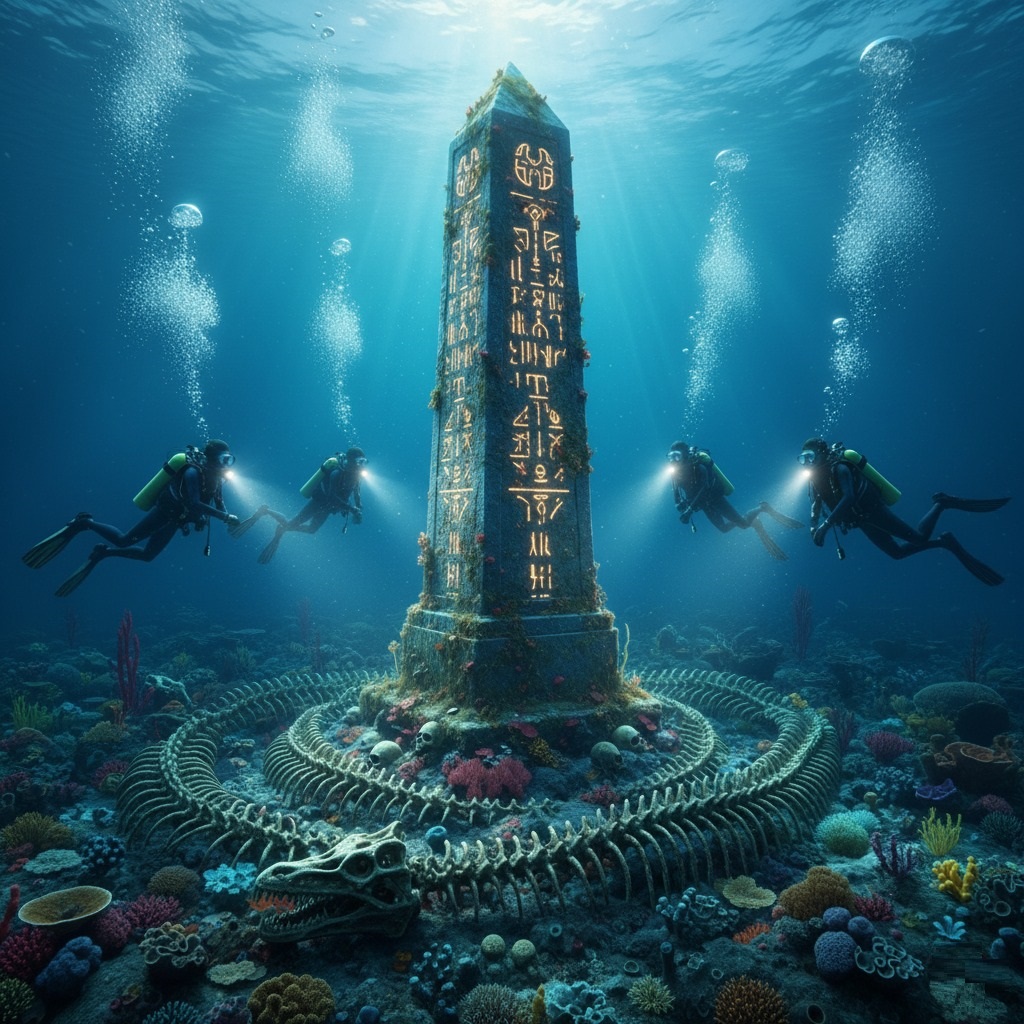The Sunken Obelisk of Thera: Unveiling Atlantis’s Secrets

The year is 2023. Dr. Aris Thorne, a maverick marine archaeologist with a reputation for chasing legends, finally had his chance. For years, he’d been obsessed with whispers of an anomalous energy signature emanating from a specific seismic fault line in the Aegean Sea, just off the coast of Santorini – ancient Thera. Conventional wisdom dismissed it as geological anomaly, but Aris, fueled by obscure Minoan texts and tantalizing old fishermen’s tales, believed otherwise. He believed it was a beacon.
His state-of-the-art submersible, the Triton, descended slowly into the obsidian depths. Below them, the familiar volcanic slopes of Santorini gave way to an uncharted trench. The sonar pulsed, revealing an impossible structure – too regular, too vast to be natural.
“This is it,” Aris breathed into his comms, his voice raspy with anticipation. “Depth, 800 meters. Prepare for external lights.”
As the Triton’s powerful floodlights cut through the abyssal gloom, a colossal shadow materialized. It was an obelisk, not of coarse volcanic rock, but of an unknown, dark material, impossibly smooth and adorned with intricate carvings that pulsed with a faint, internal golden light.
“My God,” whispered Dr. Lena Petrova, the team’s linguist, her face pressed against the viewport. “Those aren’t hieroglyphs… they’re unlike anything I’ve ever seen. A language entirely new.”
Around the base of the obelisk, arranged in a chillingly deliberate spiral, lay colossal skeletal remains. Not whales, not known marine reptiles. These were vast, serpentine, with bony plates and skull structures that spoke of apex predators from a forgotten epoch. One skull, massive and crocodilian in shape but with elongated, almost humanoid teeth, stared sightlessly towards the Triton. It was an altar of bones, guarding the silent monolith.
For weeks, the team worked. Robots meticulously scanned the obelisk, mapping every glowing glyph. Lena painstakingly began the impossible task of deciphering a language that predated recorded history, finding recurring symbols that hinted at astronomical alignments, advanced hydro-engineering, and a catastrophic event – a cataclysm of fire and water.
One evening, as Aris reviewed the thermal imaging, he noticed something peculiar. The obelisk wasn’t just cold stone; it had an internal heat signature, consistent with a low-level, continuous energy output. And then, he saw it – a tiny, barely discernible seam at its base, almost invisible beneath centuries of deep-sea growth.
“Lena, get down here!” he yelled, excitement overriding his usual scientific decorum.
With extreme caution, using specialized manipulators, they managed to clear the growth. Beneath, a small, circular recess was revealed. As Lena placed her hand, guided by an instinctive leap of faith and a newly deciphered glyph, the golden light of the obelisk intensified, and the seam widened. A soft hum filled the submersible.
Before them, a small, crystalline panel slid open, revealing not a void, but a soft, ethereal light emanating from within. Inside, encased in a shimmering force field, floated a single, ornate disc. It hummed with the same energy as the obelisk, covered in the same strange script, and impossibly, seemed to pulse with the very heartbeat of the long-lost civilization.
Aris and Lena exchanged a look of profound understanding. They weren’t just looking at an artifact; they were looking at a key. The Sunken Obelisk of Thera wasn’t a tomb; it was a vault. And within its silent heart lay the undeniable, tangible proof of Atlantis, not as a myth, but as a civilization far more advanced, and perhaps, far more tragic, than humanity had ever dared to imagine. The world was about to change.
